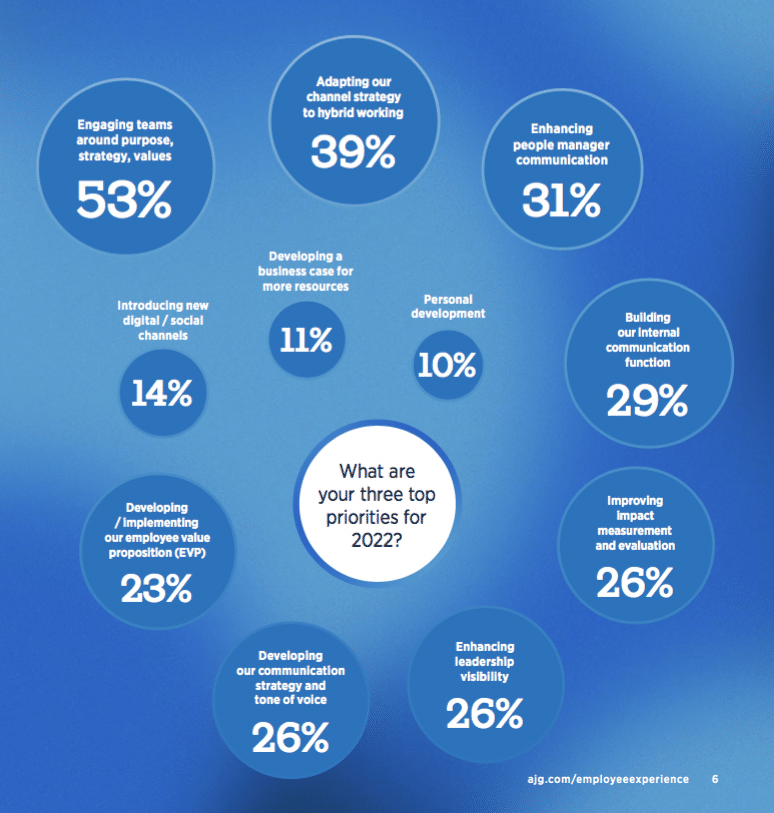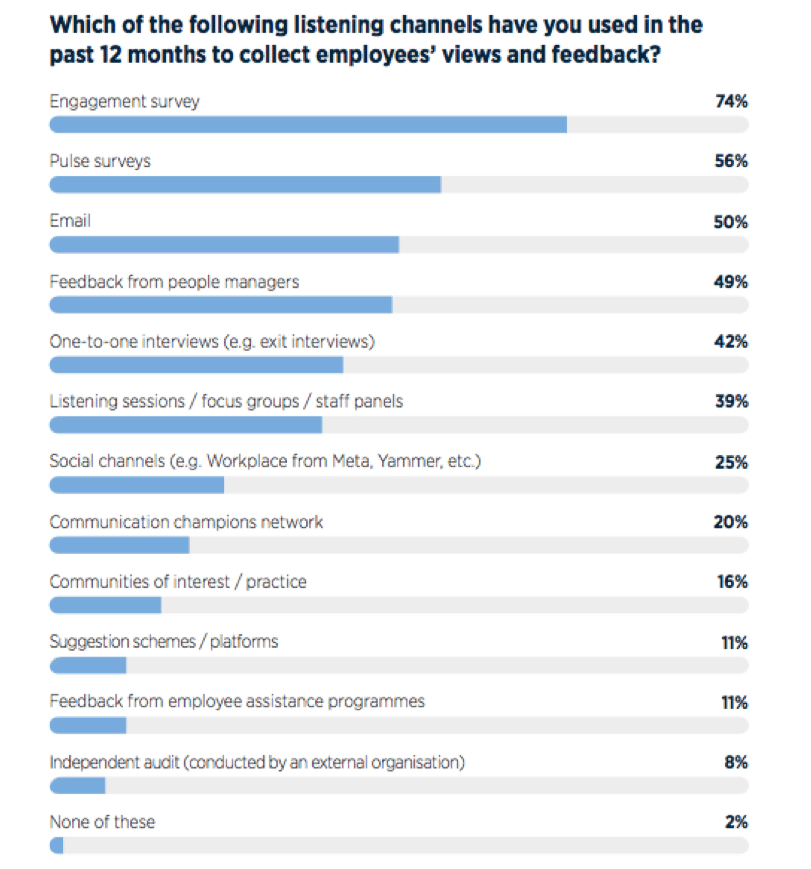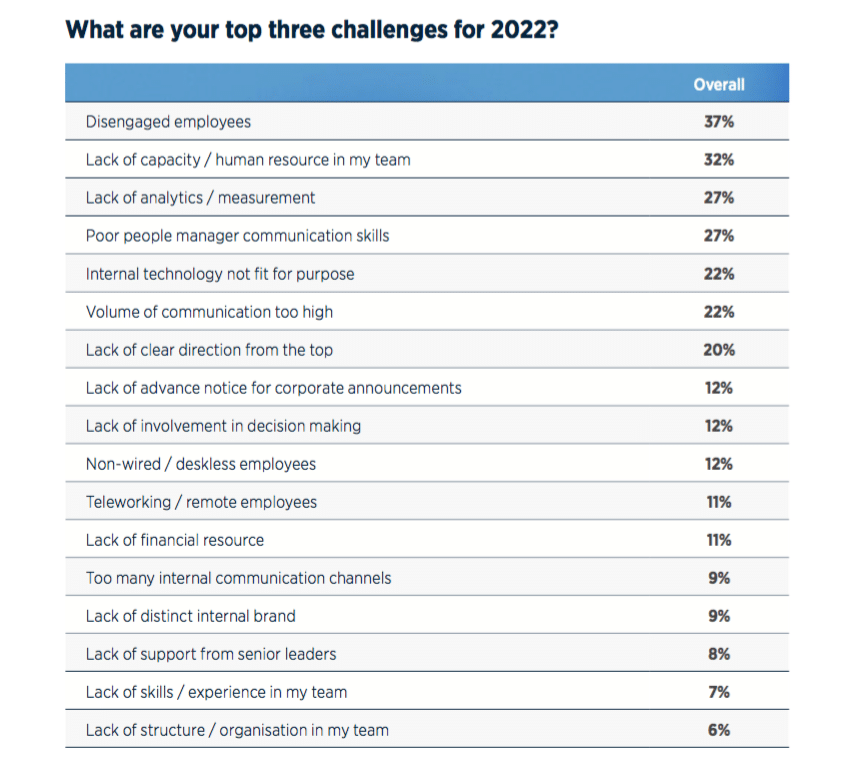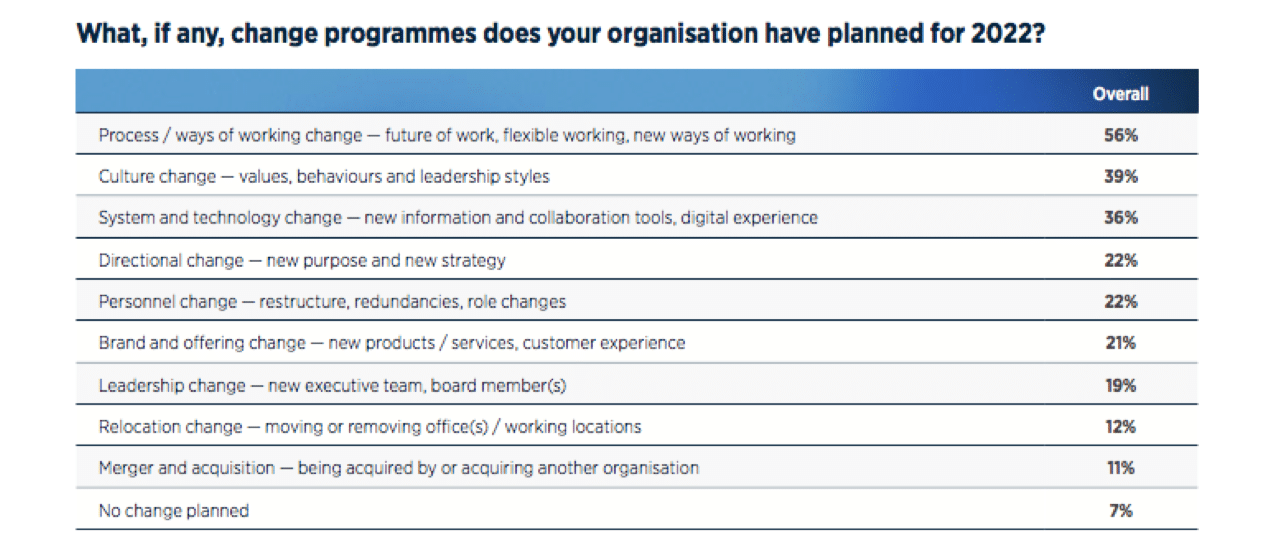Just as business processes and strategies were impacted, the pandemic introduced significant uncertainty into the workplace and forced employers around the world into highly reactive short-term communication strategies to deal with the frequently changing circumstances impacting their people and workplace.
As we enter 2022 and things begin to settle down, the three key priorities for the 1,300 employers surveyed by the Benefits & Human Resources Consulting operation of insurance, risk management and consulting firm Gallagher for its 2021/2022 State of the Sector report are: the need to re-engage their teams around purpose, strategy and values (53 percent); the need to adapt communication channels to engage the workforce better as they move to newly implemented models of hybrid working (39 percent); and the need to enhance people manager communications (31 percent).
Leveraging the Hybrid Effect
Despite many attempts to “return to the office,” people’s expectations and attitudes regarding work have changed forever. All the talk about hybrid working shows that organizations are very aware that they can’t go back, with 39 percent of respondents stating that adapting their channels to hybrid working will be a priority in 2022.
One in five (19 percent) internal communication teams of the surveyed companies have completed an in-depth review of their channel and employee engagement strategy, and around one third (34 percent) have reviews currently underway. However, there haven’t been significant shifts in channel use to date, although there are some expected changes in 2022. For example, 31 percent use mobile apps (up from 24 percent in the previous year), whereas 44 percent use posters, banners and noticeboards (down from 63 percent in the previous year).
“Organizations that reported above-industry levels of talent attraction and retention were more likely to have taken proactive steps toward such a review, suggesting that adjusting to the new world of work faster is paying off,” said Ben Reynolds, global managing director, employee communication practice at Gallagher, in a news release. “However, this isn’t really about communication anymore, it’s about reinventing the way people share knowledge and information, rethinking how collaboration and innovation can thrive in an increasingly digital workplace, and reconsidering how best to make two-way communications happen in an engaging way.”
Investing in the employee experience
In an unprecedented move, respondents saw employee disengagement as the biggest barrier to internal communication success, with nearly 4 in 10 citing it as a major challenge (37 percent). So, as mental health suffered en masse, it wasn’t surprising that these circumstances led to a career rethink for many, fueling the Great Resignation. Talent retention and attraction has therefore become a much more pressing issue this year, and it’s encouraging to see that 59 percent of respondents are reporting that executives now see the employee experience and internal communication as a way to retain talent.
“Organizations that are investing in their employee experience are doing so by turning it into actionable and measurable plans, incorporating the key components that resonate with employees, the top three being: ‘Purpose, culture and vision’ (58 percent); ‘Learning and development’ (56 percent); and ‘Wellbeing (mental, physical, financial) (55 percent). The latter has become increasingly important in the last year,” said Reynolds.
“However, despite some organizations taking on the challenge of the employee experience, and an impressive 73 percent of organizations discussing it at C-suite level, the reality of the situation doesn’t quite measure up. Sadly only 31 percent say that there is a clear mandate from the top to drive change, with a mere 19 percent of organizations having implemented cross-departmental task forces to make it happen.”
Empowering people managers
As a result of the move to hybrid working, expectations of people managers have evolved and increased significantly, with 81 percent of respondents reporting an increase in the expectations of their people managers as communicators. More than half (54 percent) expect people managers to reinforce key messages. Despite the rise in digital channels that should have made it much easier to better target employees effectively, people managers remain the primary communication channel for most employees—among a third of respondents (35 percent); with this number rising to 45% in organizations where more than half of the workers are deskless.
People managers are clearly a powerful engagement channel, but with only a third of respondents (34 percent) offering tailored communication training and two-thirds (68 percent) equipping them with corporate messages, it’s clear that support for people managers is low. When combined with a reduction in face-to-face time with this group (60 percent, down from 66 percent in the previous year) and regular conference calls (49 percent, down from 57 percent in the previous year), it’s clear there is a disconnect between increasing expectations and capabilities that needs to be addressed.
It’s also very clear that the expectations for people managers have increased materially in the last year, but support has not kept pace. Therefore, it’s no surprise that for the first time since Gallagher started compiling this survey eight years ago, the need to enhance and equip people managers with better communication skills is now a top-three priority (31 percent).
The road ahead
“There is much to be done. Employers need to see a rise in purpose-led organizations,” said Reynolds. “COVID brought many new challenges to employers, with the most significant in 2022 being adapting to new ways of working (56 percent) and introducing cultural change (39 percent). On top of this, the need to re-engage employees and attract and retain talent requires a fundamental shift in the narrative, a much needed one, to include societal themes such as diversity and inclusion, gender equality and ESG. So, there is much to be done, but we remain optimistic. We hope that the 2021/2022 State of the Sector report provides insight into trends, best practices, and ways organizations are globally dealing with these challenges. This will allow employers to set a standard and lead by example.”
Download the full report here.
Gallagher’s 2021/2022 State of the Sector report is based on data collected from more than 1,300 organizations across the world from October to November 2021. Organizations of all sizes and more than 33 industries participated. The report highlights Gallagher’s consulting approach, which centers on the full spectrum of organizational wellbeing by strategically investing in an organization’s employee health, talent, financial security and career growth potential. We develop benefit and HR programs at the right cost structures to deliver a better employee experience and support a multigenerational workforce. Gallagher Better Works, a comprehensive approach to benefits, reward, retirement, employee communication and workplace culture, aligns an organization’s human capital strategy with its overall business goals.









